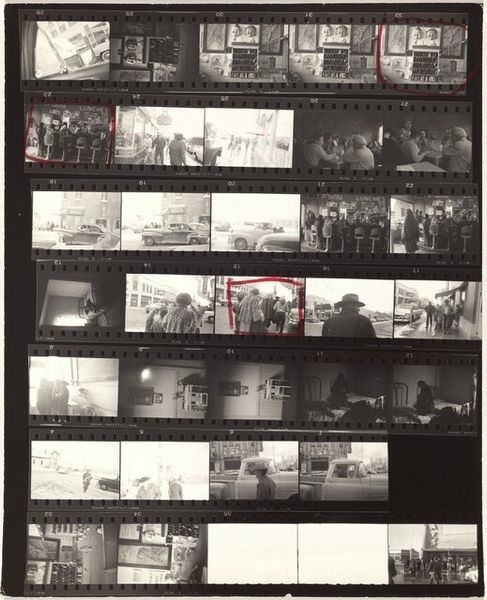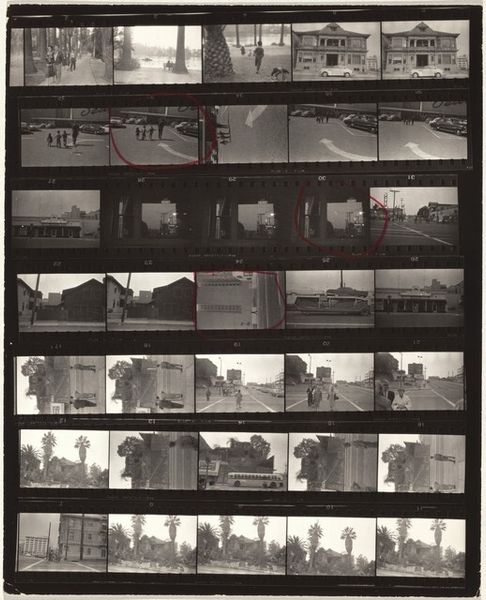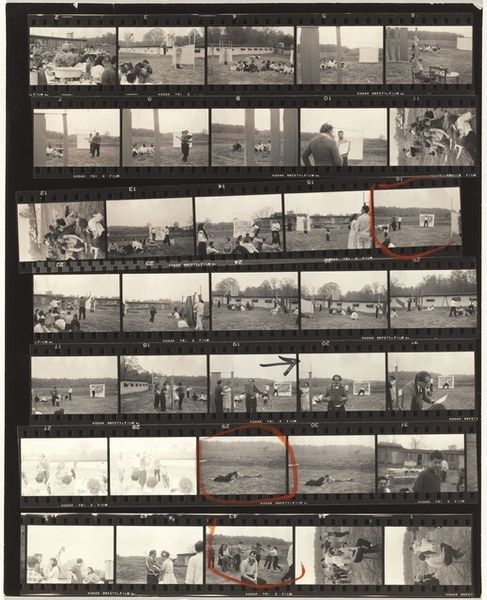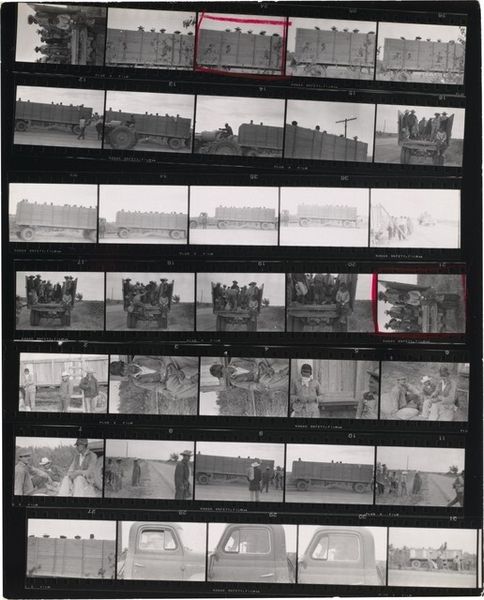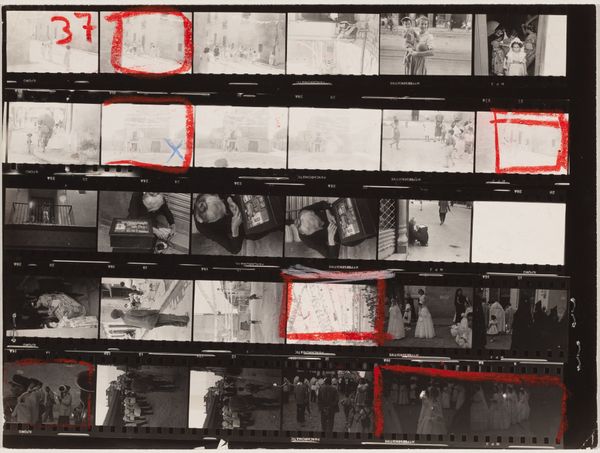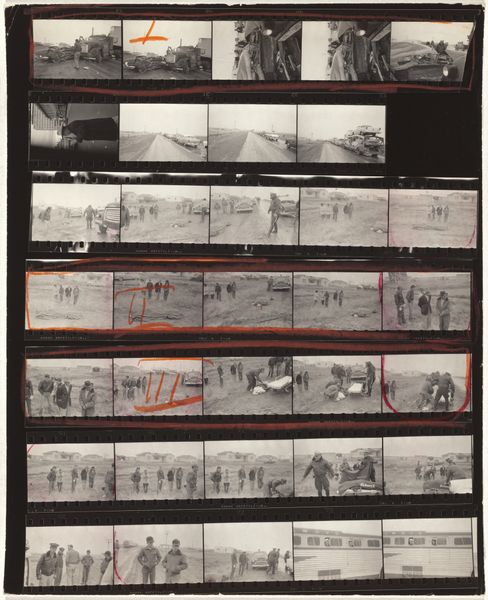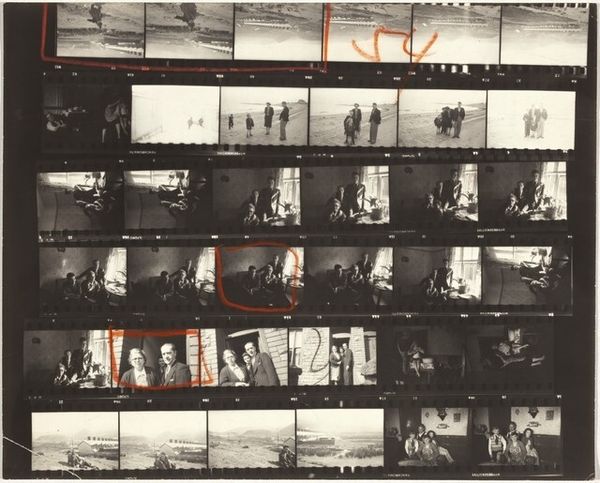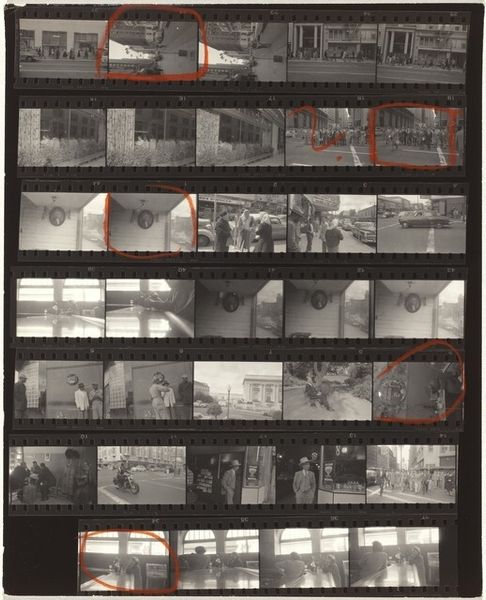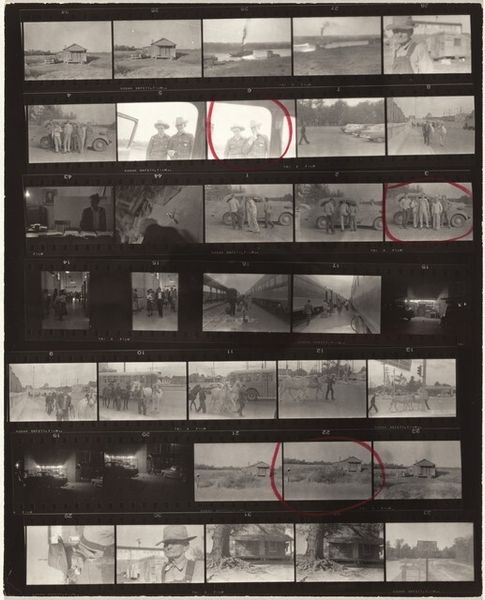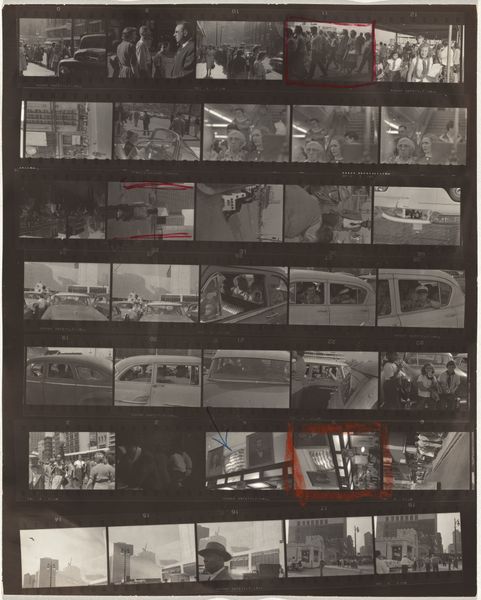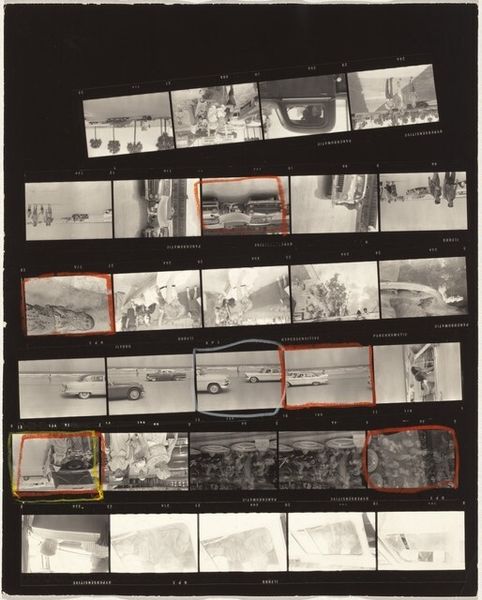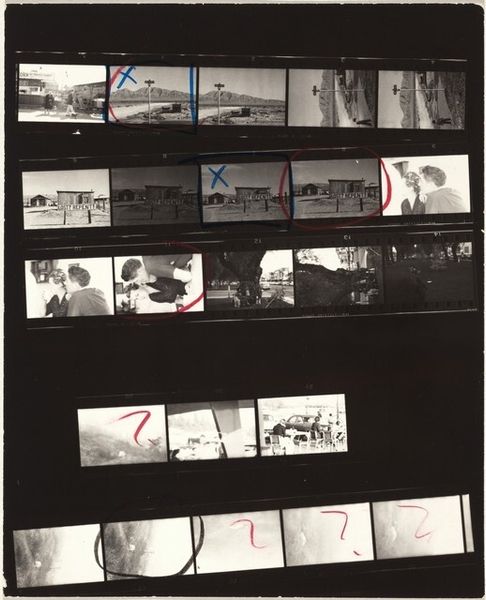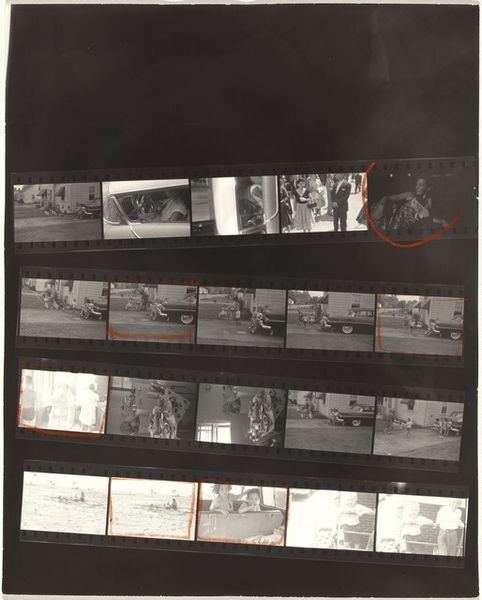
print, photography, gelatin-silver-print
print photography
landscape
street-photography
photography
gelatin-silver-print
modernism
Dimensions: overall: 20.5 x 25.3 cm (8 1/16 x 9 15/16 in.)
Copyright: National Gallery of Art: CC0 1.0
Curator: Let's consider this gelatin silver print by Robert Frank, dating back to 1955. The complete title is Guggenheim 377/Americans 42—Santa Fe, New Mexico, which suggests a series of images that explore the American landscape. What is your initial take on it? Editor: I'm struck by the raw, almost fragmented quality of this photograph. It feels like a contact sheet, offering glimpses into a place and time rather than a polished, final image. It makes me question the narrative being presented. Curator: That's insightful. The presentation is indeed critical. Frank's work, especially within "The Americans," directly challenged the idealized post-war vision of America that was being promoted in mainstream media. The photographs were not always flattering or celebratory, sometimes highlighting social tensions. Editor: Exactly, it's like he’s deliberately showing the cracks in that facade. What’s most intriguing is how he strings the narrative. There’s almost a sense of disconnect between the individual images, which somehow reflects the complexities of identity in this historical context. How do you interpret Frank’s choice of subject matter here? Curator: Well, Santa Fe holds a very specific position in the American cultural landscape. It's a place steeped in indigenous and Spanish-colonial history, yet by the 1950s, it was also a site of burgeoning tourism and artistic appropriation. Frank, as an outsider, could have been keenly aware of this juxtaposition and may have been prompting us to consider these crosscurrents and maybe questioning them. Editor: Right, I wonder if there is a hint of criticism of that cultural tourism here? This visual form of preservation somehow seems to put real life and progress into conflict. And the choice of this particular film format somehow also manages to underline its critical commentary. Curator: That's a good point. His choices draw attention to the staged authenticity being peddled. By showing the process, the viewer isn't passively consuming; they are being invited to think critically about the photographer's choices. Frank encourages this awareness, showing photography's potential for engaging social and political critique. Editor: Absolutely, it leaves me thinking about how images are constructed and consumed even today, and what responsibility lies with artists and viewers to confront dominant narratives. Curator: And for me, this image, beyond its individual aesthetic qualities, serves as a reminder of photography's capacity to record social change. It challenges us to engage with images not just as documents, but also as points of historical, cultural and political intervention.
Comments
No comments
Be the first to comment and join the conversation on the ultimate creative platform.
